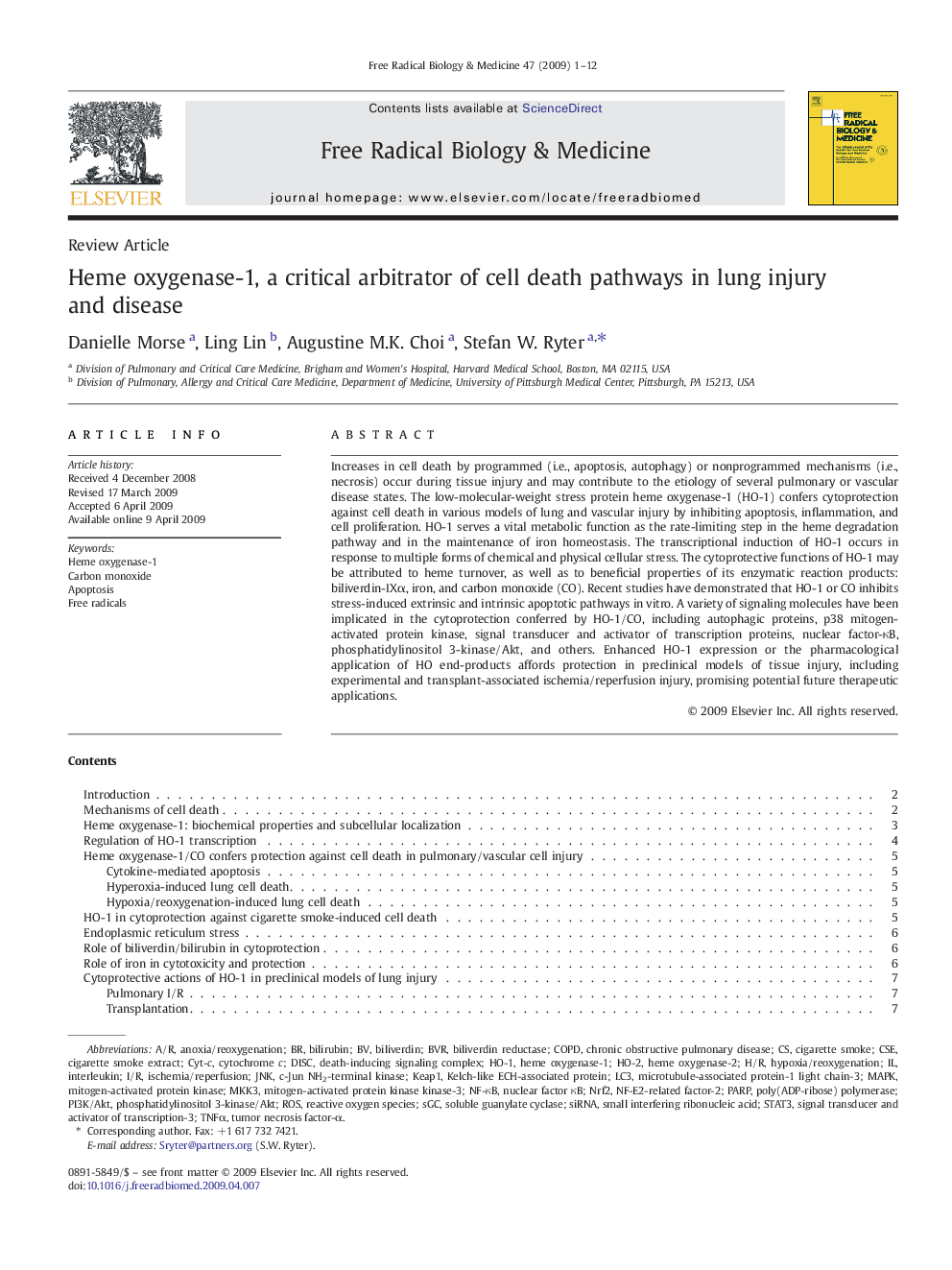| Article ID | Journal | Published Year | Pages | File Type |
|---|---|---|---|---|
| 1910213 | Free Radical Biology and Medicine | 2009 | 12 Pages |
Increases in cell death by programmed (i.e., apoptosis, autophagy) or nonprogrammed mechanisms (i.e., necrosis) occur during tissue injury and may contribute to the etiology of several pulmonary or vascular disease states. The low-molecular-weight stress protein heme oxygenase-1 (HO-1) confers cytoprotection against cell death in various models of lung and vascular injury by inhibiting apoptosis, inflammation, and cell proliferation. HO-1 serves a vital metabolic function as the rate-limiting step in the heme degradation pathway and in the maintenance of iron homeostasis. The transcriptional induction of HO-1 occurs in response to multiple forms of chemical and physical cellular stress. The cytoprotective functions of HO-1 may be attributed to heme turnover, as well as to beneficial properties of its enzymatic reaction products: biliverdin-IXα, iron, and carbon monoxide (CO). Recent studies have demonstrated that HO-1 or CO inhibits stress-induced extrinsic and intrinsic apoptotic pathways in vitro. A variety of signaling molecules have been implicated in the cytoprotection conferred by HO-1/CO, including autophagic proteins, p38 mitogen-activated protein kinase, signal transducer and activator of transcription proteins, nuclear factor-κB, phosphatidylinositol 3-kinase/Akt, and others. Enhanced HO-1 expression or the pharmacological application of HO end-products affords protection in preclinical models of tissue injury, including experimental and transplant-associated ischemia/reperfusion injury, promising potential future therapeutic applications.
